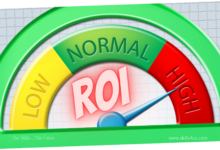
Practical Steps for Developing a Training Needs Analysis (TNA) Procedure
Every leader or manager in the organization wants his employee to work better. And reach the optimum level of performance to achieve the set goals and improve the organization’s productivity. Therefore, the employees must have the full capabilities and competencies to perform their job. Thus, the HRM department always focuses on the idea that the continuous learning process benefits the employees. As it keeps their skills up to date and improves their performance. Developing TNA is a tool that helps organizations to identify the new skills, knowledge, and attitudes employees need to acquire to improve performance.
It is also a systematic process to determine the type of training required. And to provide details related to its implementation. Accordingly, developing TNA procedure helps organizations discover the gap in skills and training for their current employees to perform current and future jobs efficiently.
Training Needs Analysis (TNA) in HRM
TNA is often referred to as L&D need analysis in the HR department. The analysis concerns the skills and knowledge gap and how the HRM department can help bridge the gap. Therefore, the TNA of employees is an essential step in ensuring the effectiveness of their training and meeting the identified needs. Here are the following practical steps to help you develop a TNA procedure:
Step 1: Define the Area and Time Frame of the Analysis
The analysis must be in line with business needs. And gaps must be addressed to make the required improvement and change. The scope of the analysis can include and target employees and their job roles or the departments in which they work in addition to setting a time frame. Defining the scope and time frame of the analysis contributes to saving effort, time, and costs during implementation.
Step 2: Define Job Roles and Tasks and Their Performance
Today, organizations are witnessing rapid developments and changes, which lead to change and development in job roles and tasks. For example, the use of new techniques and technology at work. This calls for developing the performance required to accomplish these changing roles and tasks. Therefore, it is automatically possible to define these new tasks and roles that the employees will perform. Thus determining the capabilities and competencies required to perform them efficiently and effectively. As a result, it is necessary to compare the current operating results and the required performance of the employee. Which determines the difference between the required and actual productivity of the organization. Thus any gaps in job performance can be identified, and the appropriate training program allocated.
Step 3: Identify the Skills and Knowledge Gaps
After identifying and knowing the capabilities and competencies required to perform the job roles and tasks included in the field of analysis, it is necessary to use mechanisms and procedures to evaluate employees’ skills. For example, gaps in skills and knowledge can be identified through surveys, interviews, or observations. Therefore, training programs that are compatible with these needs can be customized to fill these gaps to improve and develop the performance of employees to carry out their tasks efficiently and effectively.
Step 4: Develop an Action Plan
The corollary of the previous steps is to devise and develop a customized training program to meet the needs identified within the previous steps. Note that this may include identifying resources to help employees acquire the necessary skills and knowledge. An action plan must be developed to achieve the desired results of the training program and meet the specific needs. The plan should also include procedures that assist in implementing, following up, and evaluating the effectiveness of the training program, as well as measuring the success of the TNA steps and procedures.
It is essential to note that these steps are not necessarily linear and can be repeated as necessary. In addition, developing TNA trend to be the operation flexible, subject to continuous improvement, and tailored to the specific organization, as each organization’s particular needs may differ.



